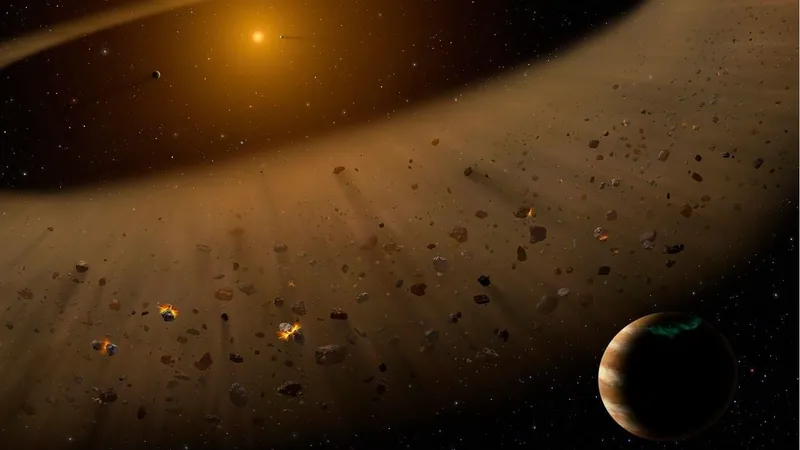
James Webb Space Telescope’s Bold Hunt for New Worlds: A Mixed Bag at Epsilon Eridani!
2025-08-27
Author: Mei
In the vast cosmos, sometimes it’s the failed searches that teach us the most! The James Webb Space Telescope (JWST), our most advanced eye on the universe, recently aimed its powerful gaze at Epsilon Eridani, one of the closest stars to Earth, and the results were both illuminating and perplexing.
Epsilon Eridani, at a mere 10.5 light years away, has been a point of contention among astronomers for decades, with speculation swirling about potential planets. JWST's latest mission sought to uncover two suspected planets orbiting this relatively young star, which is only 400 million years old.
The first of these elusive worlds, theorized to be around the size of Jupiter, was expected to be found about 3.5 astronomical units (AU) from Epsilon Eridani. The second, still unconfirmed, was believed to be shepherding the remarkable rings surrounding the star, potentially situated around 45 AU away.
Despite a promising initial observation that hinted at a planetary presence—a tantalizing ‘blob’ of light detected by the NIRCam instrument right where researchers predicted—the resolution fell short. This hopeful signal was obscured by a 'noise' artifact created by the telescope’s own equipment. Unfortunately, the data couldn’t provide the statistical backing needed to claim a discovery.
But it wasn’t all disappointment. JWST's observations definitively ruled out the existence of any Saturn-sized planets beyond 16 AU. This essentially eliminated the possibility of a ring-shepherding planet in those outer realms.
When focusing on the dust disk, NIRCam captured a faint glow on the eastern side of Epsilon Eridani. Yet, this signal is likely just the dust scattering light, rather than another potential planet.
Notably, JWST used an innovative ‘three-roll’ observing technique during these observations, allowing for enhanced detection capabilities. By capturing light at three different angles, this new method yielded a 20-30% improvement in spotting faint celestial objects compared to the traditional two-roll approach.
While some may view this endeavor as a setback due to the absence of confirmed planets, it’s essential to recognize the advancement in constraints that JWST established regarding the Epsilon Eridani system. Even in perceived failures, science continues to progress, paving the way for future discoveries. With JWST’s mission just beginning, there's much to look forward to in unraveling the mysteries of our universe!



 Brasil (PT)
Brasil (PT)
 Canada (EN)
Canada (EN)
 Chile (ES)
Chile (ES)
 Česko (CS)
Česko (CS)
 대한민국 (KO)
대한민국 (KO)
 España (ES)
España (ES)
 France (FR)
France (FR)
 Hong Kong (EN)
Hong Kong (EN)
 Italia (IT)
Italia (IT)
 日本 (JA)
日本 (JA)
 Magyarország (HU)
Magyarország (HU)
 Norge (NO)
Norge (NO)
 Polska (PL)
Polska (PL)
 Schweiz (DE)
Schweiz (DE)
 Singapore (EN)
Singapore (EN)
 Sverige (SV)
Sverige (SV)
 Suomi (FI)
Suomi (FI)
 Türkiye (TR)
Türkiye (TR)
 الإمارات العربية المتحدة (AR)
الإمارات العربية المتحدة (AR)